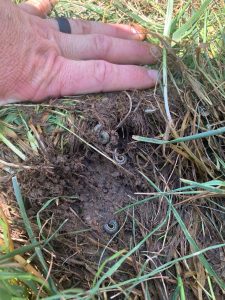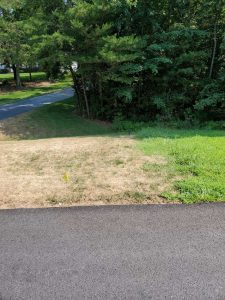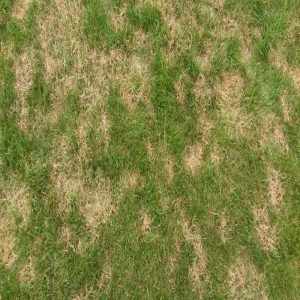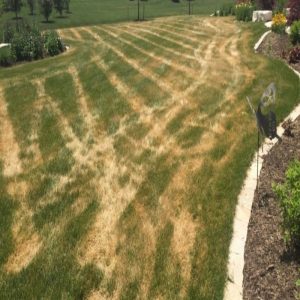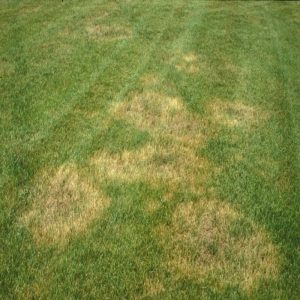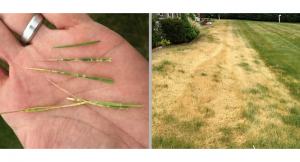Watering
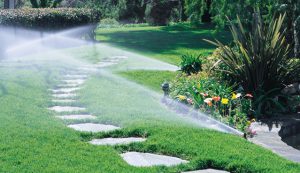
Cool season lawn grasses—bluegrasses, ryegrasses, fescues, and bentgrasses—require approximately 1 to 1 1/2 inches of water per week during the growing season to maintain green and active growth. Even when they are watered, however, the growth of cool season lawn grasses slows during summer’s hot, dry weather because environmental conditions are not within the optimum range for turfgrass growth.
Number 1 Rule – Water in the Morning
Summertime in Kansas can be sweltering. So, in the spirit of water efficiency, it’s best to irrigate in the morning. Doing this will result in less water lost to evaporation while allowing for the lawn to dry up before nightfall.
Additional Info to help keep your lawn healthy during the heat of the Summer:
1. Do not mow turf too short. During spring and autumn in the north central region, maintain most lawns at 3 t0 3.5 inches. Raise this height during the summer and any time the lawn is stressed by pests or environmental conditions. Mow frequently and never remove more than one-third of the grass blade at any one mowing. Depending on your mower you may not be able to raise the deck to more than 4 inches, if you are unsure the best option during the heat of Summer is to raise the deck as high as it will go.
– Pro Tip: Most mowers have a setting for deck height, and from experience most of them are wrong. To find out your deck height simply place your mower on a flat surface grab a tape measure and measure the distance from the ground to the bottom of the blade. If you are one of the lucky ones, it should match the number on your mower, if not you can adjust the deck based on your measurement. Tire pressure can effect deck height so be sure your mower tires are properly inflated.
2. Limit lawn traffic during hot, dry periods.
3. It is best to water deeply and infrequently. Water to the depth of the turf root system, that is, supply enough water in one irrigation to moisten the entire soil profile where roots are growing. Usually, 1 inch of water is adequate to supply this amount. Do not water again until this soil area has dried, and then water the entire soil-root zone again.
4. Avoid light, frequent irrigation unless you have just seeded an area. Light frequent irrigation encourages shallow turfgrasses rooting and annual weed invasion.
5. To determine when to water, walk on your lawn to see if your footprints are visible behind you. On lawns in need of water, the grasses will not spring back following trafficking. Where moisture is adequate, grasses will spring back.
Seasonal Adjustments
What worked for your lawn this spring won’t cut it when it comes to the summer heat and humidity. Seasonal adjustments to your irrigation controller will help ensure that your lawn is getting the hydration it needs. Several factors will influence how much water your plants will need, such as slope, local weather patterns, wind velocity, and the amount of sun exposure each zone receives. You are able to manually increase the number of days that your irrigation system will run, as well as how long each zone receives water.
An alternative method of managing lawn irrigation is to allow the lawn to go dormant during hot, dry weather. Unwatered lawns of cool season species normally become dormant and brown during hot, dry periods and then recover acceptably when growing conditions improve in the late summer or early autumn. During most years, lawns in the north central region can safely survive periods without summer irrigation.
How can Condray & Young Help?
If you have any questions about the amount of water your landscape requires, just give us a call. We can talk with you about your specific needs or we can send our team to make adjustments for you!






